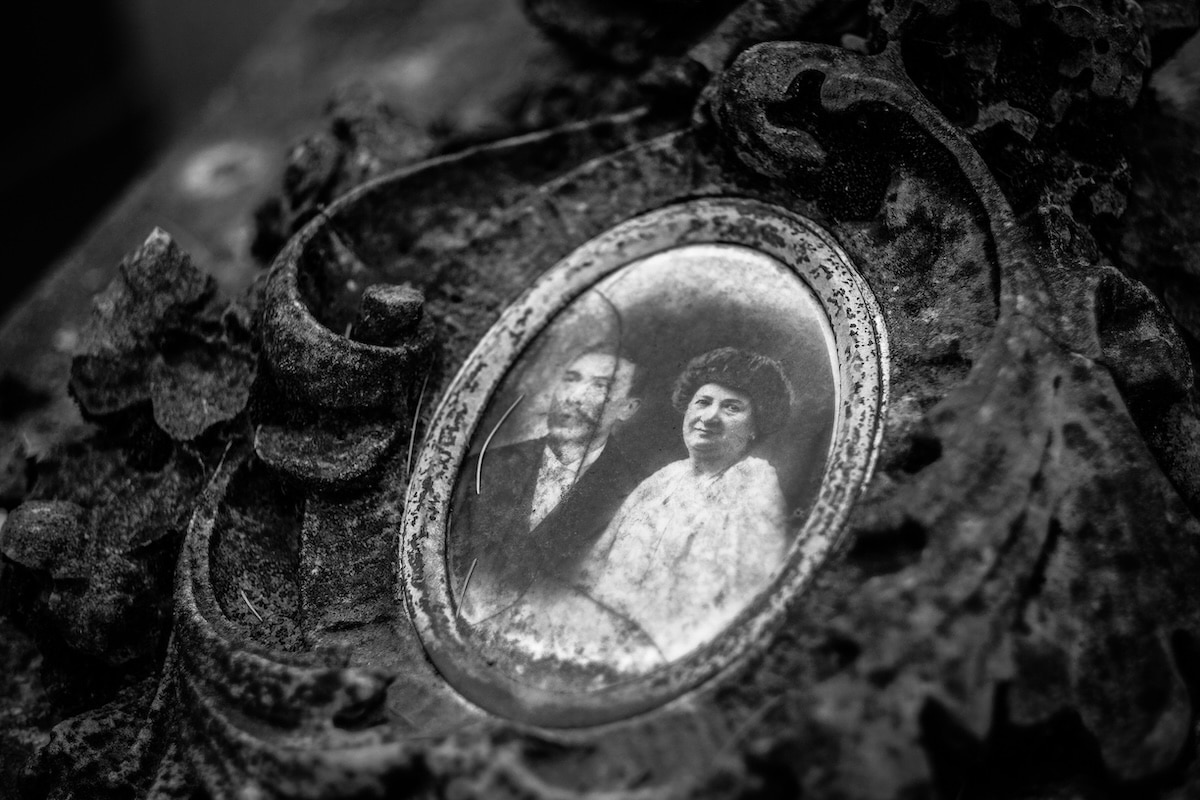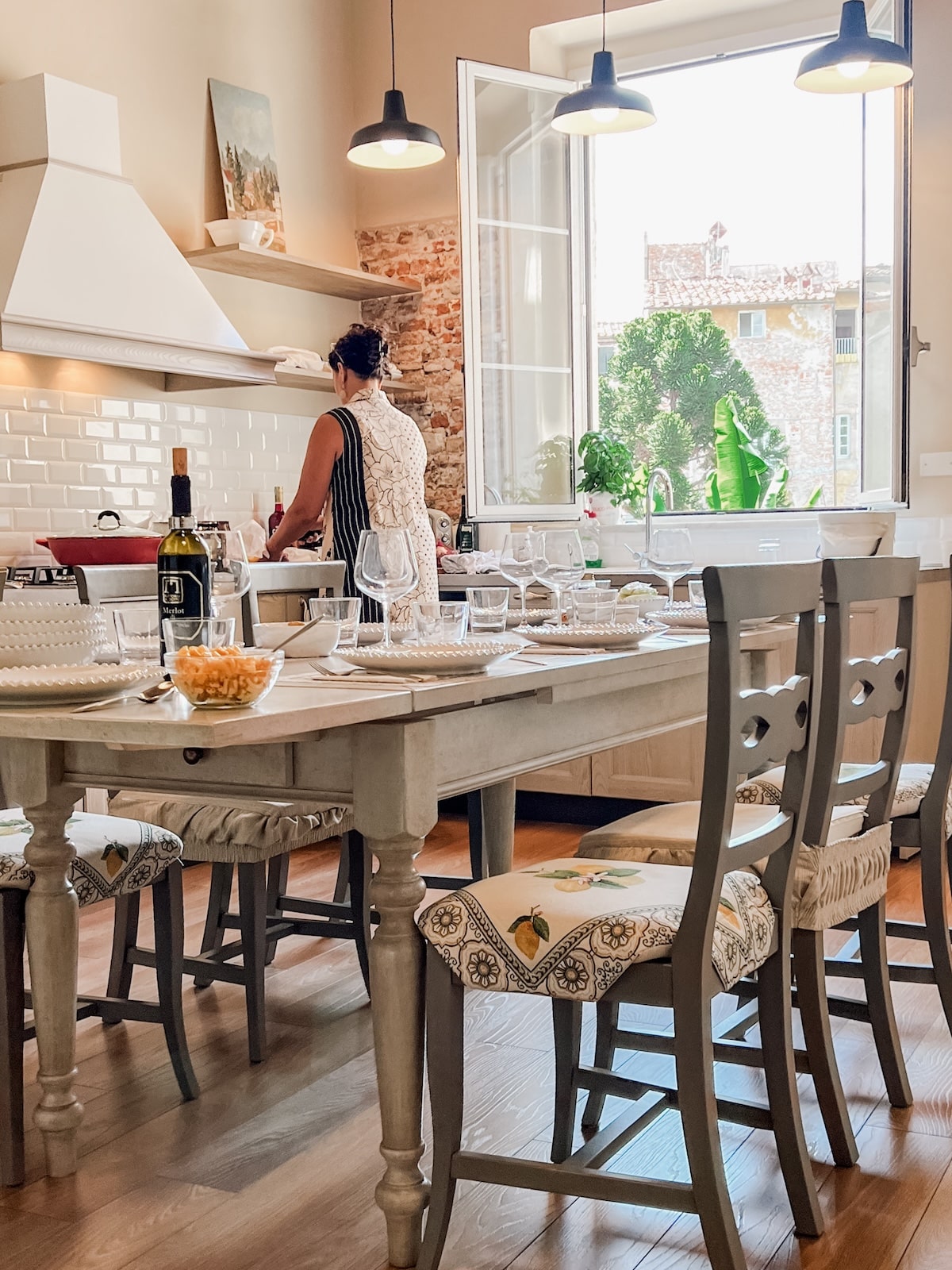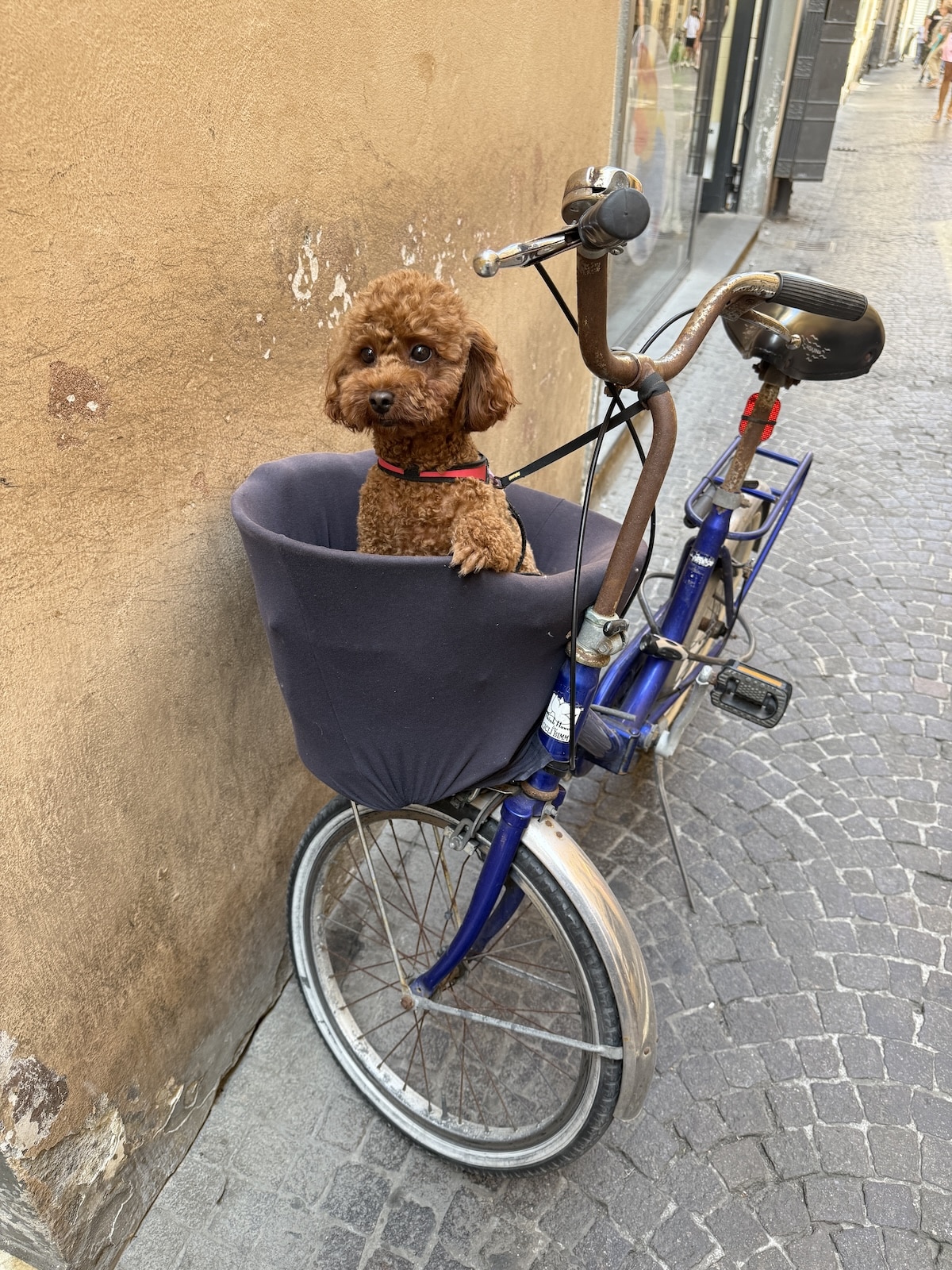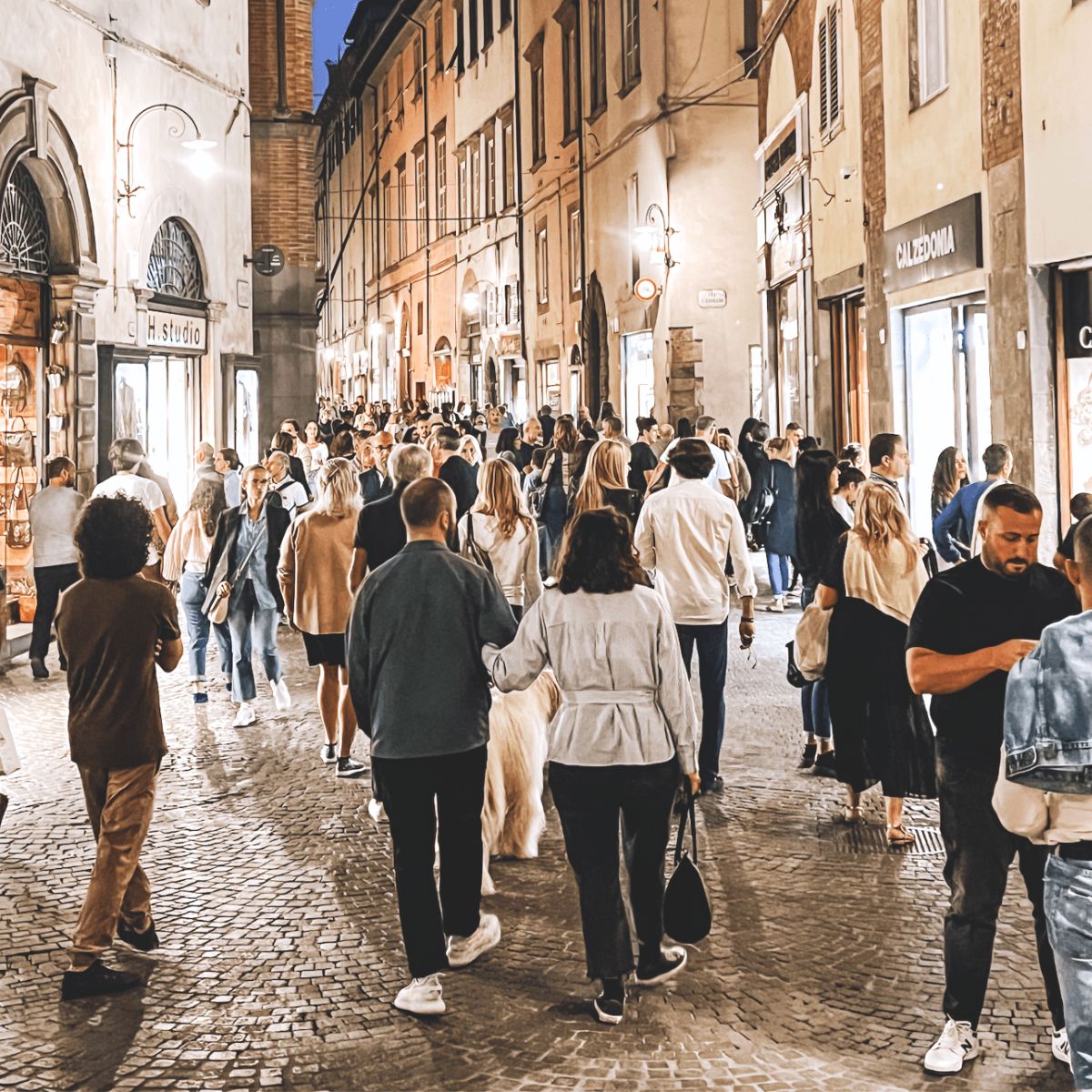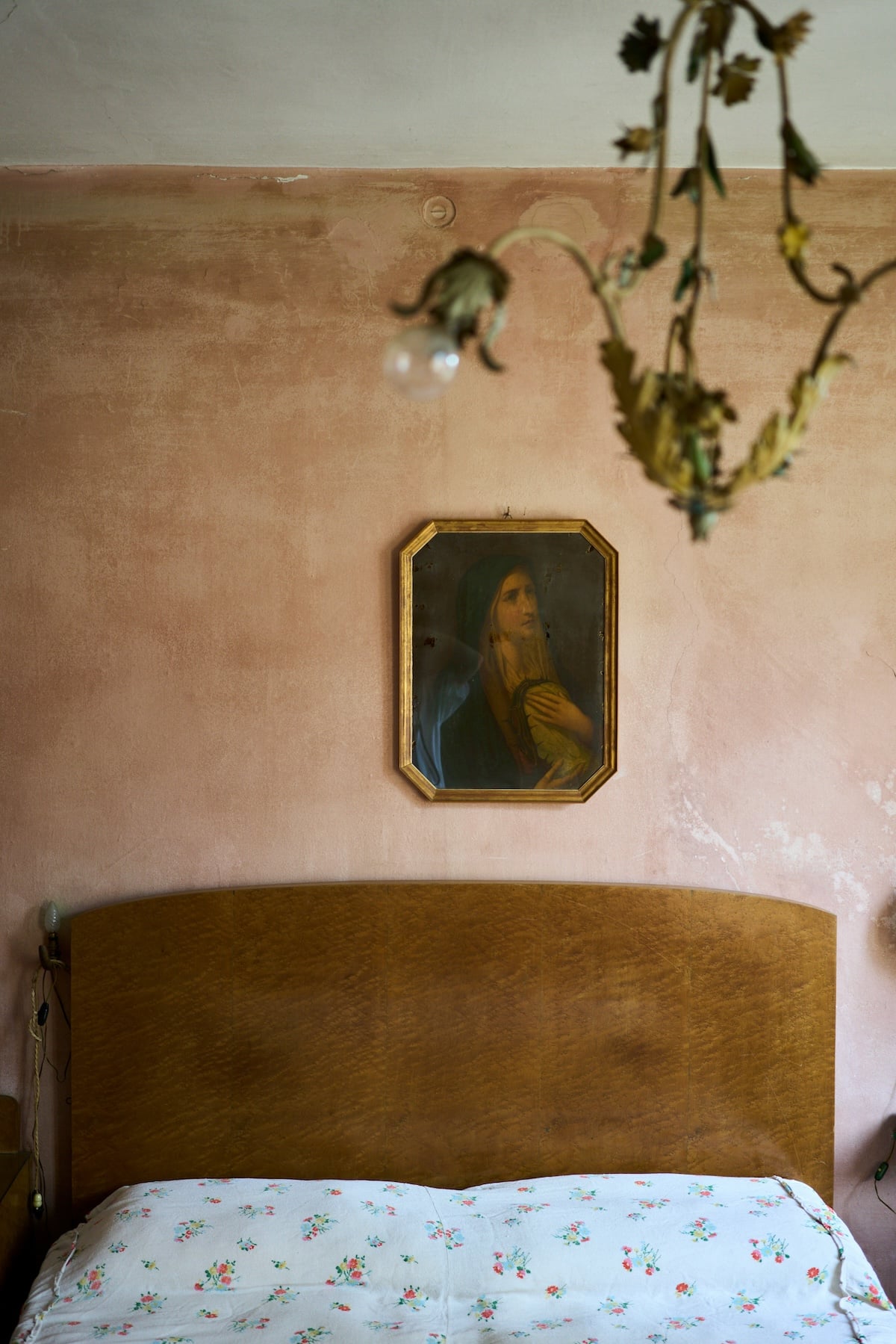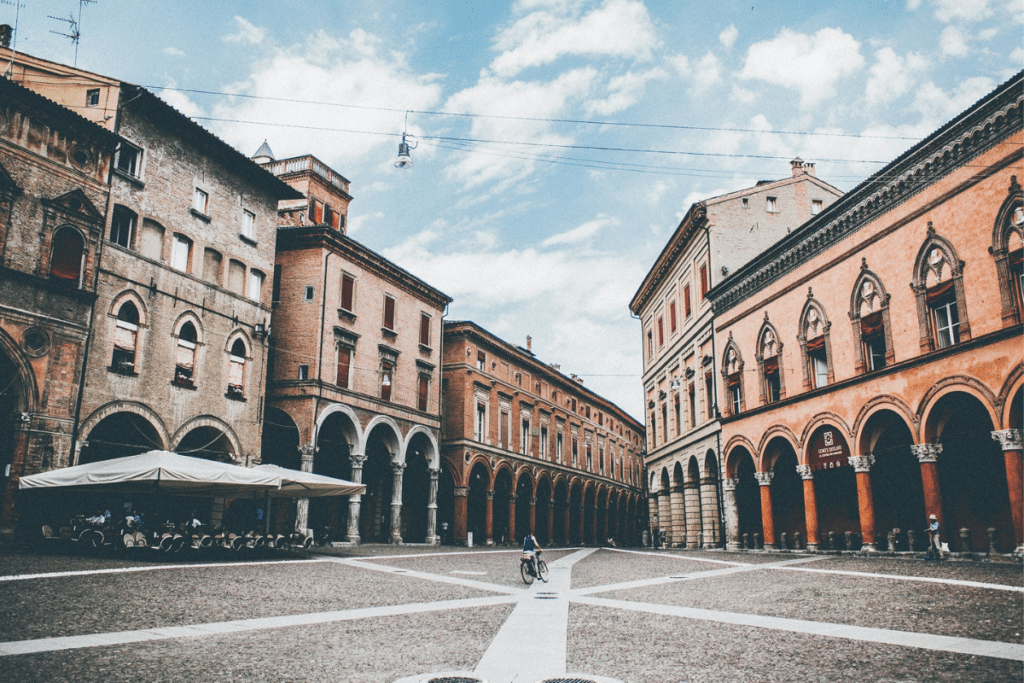
Many travelers skip Bologna in favor of Florence or Venice. I think that’s a mistake.
If you want something real—not touristy—Bologna is a perfect Italian destination.
After visiting Bologna multiple times over the past decade, I’ve fallen for this underrated city. Hard.
It offers everything I love about Italy without the downsides that often come with more famous destinations.
Let me walk you through why Bologna deserves a spot on your itinerary.
Quick Summary
- Bologna gives you authentic Italian life with far fewer tourists
- The food scene is world-class (and more affordable)
- Its central location makes exploring northern Italy easy
- You’ll spend less than in major tourist cities
- It works equally well for Italy first-timers or returning travelers
Practical Benefits
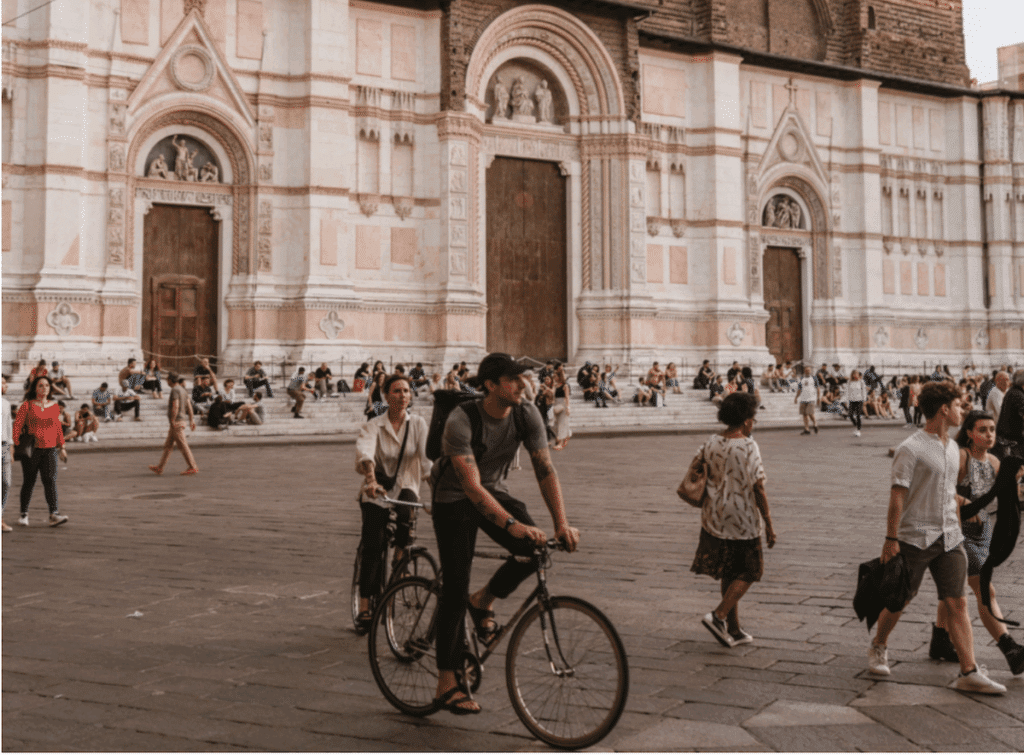
1. It’s One of Italy’s Most Walkable Cities
Leave the rental car behind, folks. Your feet are all you need in Bologna.
I love how compact this city is! I stayed near the main square and reached practically everything within a 15-minute stroll.
Those famous porticoes saved me during my July visit when the temperature hit 90°F. Walking under their shade felt like having my own private cooling system.
After struggling up the hills of Siena last year (gorgeous but exhausting!), Bologna’s flat terrain was a welcome relief. My mom with her bad knee could actually enjoy this city without wincing.
The train station? Just a quick 15-minute walk from the main square. Even with luggage, it was manageable.
This walkability changed how I experienced Bologna. Instead of checking Google Maps every five minutes, I actually looked up and noticed things—like the 16th-century ceiling paintings inside random porticoes.
2. Fewer Tourists, More Locals
Know that feeling when you’re shuffling through Venice behind a wall of selfie sticks? Bologna is the opposite experience.
This city actually functions as a real place where Italians live their lives. Imagine that!
My “I’m really in Italy” moment came when I realized I hadn’t heard English spoken in hours. The markets were full of Italians buying dinner ingredients, not tourists buying refrigerator magnets.
Restaurant menus don’t have English translations or—heaven forbid—photos of the food. When I asked for recommendations, I got the owner’s actual favorites, not what they think Americans want.
It’s refreshing—and lets you experience everyday Italian life instead of a tourist bubble.
3. It’s Cheaper Than Florence or Rome
My wallet does a little happy dance whenever I visit Bologna.
Hotels in the historic center cost significantly less than comparable spots in Florence or Rome. We’re talking 30-40% savings on accommodations alone!
The morning espresso ritual? Nearly half the price I reluctantly paid in Venice. Those savings add up fast.
What really shocked me was dinner. A multi-course feast with local wine in Bologna would barely cover a main dish and house wine in Rome.
But here’s what I love: Bologna doesn’t feel “budget” at all. The piazzas are just as beautiful, the architecture just as impressive.
4. Bologna Makes a Great Home Base
Want to know my secret to not feeling exhausted after an Italy trip? Using Bologna as my home base.
I unpacked once and settled in. No dragging luggage up and down train station stairs every other day!
Each morning, I’d grab coffee at “my” café where the barista started recognizing me. By day three, he’d start making my order as soon as I walked in.
Then I’d hop on a high-speed train to explore Florence, Venice, or Modena for the day. All are under 90 minutes away.
The best part? Coming “home” to Bologna each evening where I didn’t need reservations weeks in advance just to get dinner.
After a day battling crowds in Florence, returning to Bologna’s relaxed vibe felt like exhaling a breath I didn’t know I was holding.
5. It’s Easy to Get To
After once spending hours getting from Rome’s airport to my hotel, Bologna’s accessibility feels like a gift from the travel gods.
The city has its own airport with direct flights from major European hubs. Even better, it sits right on Italy’s main high-speed rail line.
There are two options: flying directly to Bologna and taking the 20-minute airport train to the center, or landing in Milan and hopping on a high-speed train that gets you to Bologna in an hour.
Both are ridiculously easy.
This might sound like a minor detail until you’re jet-lagged and dragging luggage through unfamiliar streets. Trust me—simple connections make all the difference between starting your vacation stressed or relaxed.
The accessibility extends to day trips too. Visit medieval towns in Emilia-Romagna using just regional buses that run like clockwork.
6. The Porticoes Are UNESCO-Listed (And Beautiful)
I’m slightly obsessed with Bologna’s porticoes. These covered walkways have protected pedestrians since medieval times and finally got UNESCO recognition in 2021.
They’re Bologna’s superpower—stretching over 60 kilometers throughout the city.
During my spring visit, I got caught in a sudden downpour. Instead of ducking into shops or getting soaked, I just kept walking under these beautiful shelters, completely dry.
Each portico tells its own story. Some are humble with simple wooden beams. Others flaunt intricately painted ceilings and marble columns that make you feel like you’re in a palace.
For the ultimate portico experience, I followed the world’s longest one—3.8 km with 666 arches—up to the San Luca Sanctuary. My legs complained, but my eyes were in heaven!
Walking these paths, I couldn’t help thinking about the millions of footsteps that came before mine over the centuries—students rushing to class, lovers stealing kisses, merchants carrying goods. It’s living history.
It’s A Food Lover’s Paradise
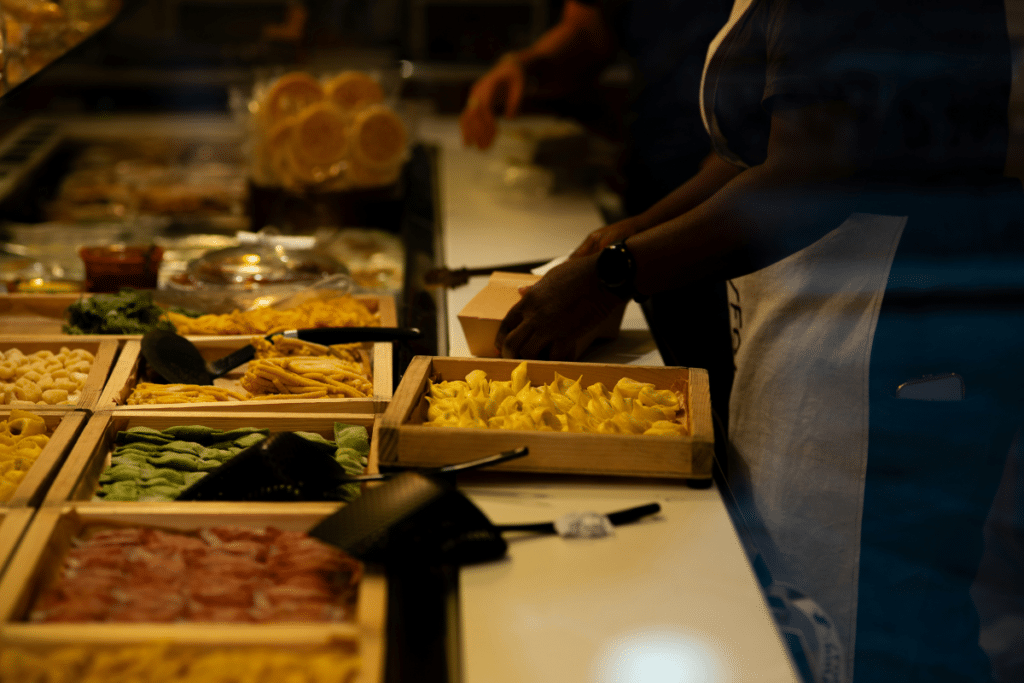
7. Bologna Is a Food Lover’s Dream
I almost cried during my first dinner in Bologna. Not kidding.
This city birthed tagliatelle al ragù, tortellini in brodo, and mortadella. They call it “La Grassa” (The Fat One) for good reason!
I’d spent years thinking I knew Italian food. Then I twirled my first fork of proper tagliatelle with ragù and realized I knew nothing. That “spaghetti bolognese” back home? A sad imposter.
What makes Bologna special is how unpretentious it all is. No foam. No deconstruction. Just generations of families making the same incredible pasta by hand.
I watched a woman in her 70s rolling out tortellini in a restaurant window, using the exact technique her grandmother taught her.
Even the mortadella here—ancestor of what Americans call “bologna”—is unrecognizable from that sad lunch meat. It’s delicate, aromatic, and worth crossing an ocean for.
Bologna takes food seriously without taking itself seriously. It’s the perfect combo for us food-obsessed travelers.
8. You Can Take a Food Tour That Doesn’t Feel Touristy
I’ve been on food tours where everything feels choreographed for tourists. Bologna couldn’t be more different.
“This is Marco—he makes the best mortadella in Bologna,” announced Francesca, our local guide, giving the butcher a kiss on both cheeks.
Marco rolled his eyes but couldn’t hide his smile as he sliced paper-thin mortadella for us.
Our little group followed Francesca through the market, stopping wherever she spotted something special that day.
The shop owners weren’t serving “tourist portions”—they sliced directly from the same wheels they were selling to locals.
Between bites, Francesca shared stories about her grandmother insisting tortellini must always be served in broth on Christmas Day.
I even returned to several shops the next day. The cheese vendor winked, “Ah, you came back for more of the good stuff!”
For something hands-on, try a pasta-making class. I learned from a 78-year-old nonna who corrected me with gentle hands and Italian I couldn’t understand—but somehow still knew exactly what she meant.
These experiences gave me the confidence to explore Bologna’s food scene on my own. Money extremely well spent.
9. The Food Markets Are Full of Local Life
Please, please, please—skip the supermarket.
My first morning in Bologna, I followed the crowd of elderly ladies with shopping trolleys. Best decision ever.
They led me straight to Mercato delle Erbe, where I instantly felt like I’d stumbled onto a movie set of perfect Italian daily life.
“Buongiorno, bella! What can I get you today?” called a fruit vendor, his weathered hands arranging perfect peaches. I pointed awkwardly at what I wanted, my Italian failing me, but he smiled and threw in an extra plum anyway.
The energy is completely different from the polished farmers markets back home. Nothing is arranged for Instagram. Everything is arranged for flavor.
I’ve returned to Bologna several times, and my favorite ritual is visiting the Quadrilatero—the maze-like medieval market area that’s been feeding Bolognese since Roman times.
Last spring, I wandered its narrow alleys, accidentally bumping shoulders with businessmen buying fresh pasta for dinner and nonnas inspecting every tomato before purchase.
One evening around 6pm, I watched Mercato delle Erbe transform as office workers poured in for aperitivo. Market stalls closed while hidden bars and tiny restaurants filled with locals unwinding over Lambrusco and mortadella.
This isn’t the Bologna you find in tourist brochures. It’s better—it’s the Bologna where actual life happens every day.
10. You Can Visit the “Big Three” of Emilia-Romagna’s Food Scene
Let me tell you about my food pilgrimage to the holy trinity of Italian ingredients.
Parmigiano Reggiano. Prosciutto di Parma. Traditional balsamic vinegar.
All three are born within a short drive from Bologna, and visiting their birthplaces changed how I think about food forever.
I dragged myself out of bed at 5 AM to watch Parmigiano Reggiano being made. Crazy? Maybe. Worth it? Absolutely.
There’s something magical about watching cheese masters pull giant silk-like curds from copper vats, knowing they’re using the exact same methods from centuries ago.
Then I walked through aging rooms where thousands of cheese wheels worth millions quietly mature. The smell alone was worth the early wake-up call!
Another day, I drove into the hills outside Parma to see prosciutto in its natural habitat. The producer explained how the perfect combination of hillside breezes creates the only environment where true Prosciutto di Parma can develop.
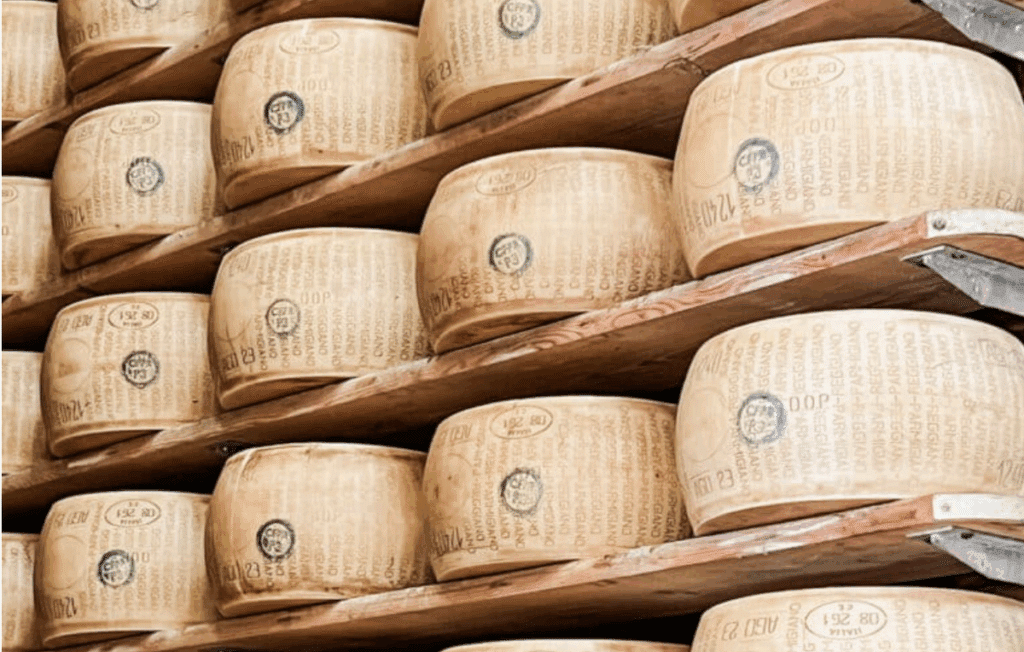
“Feel the air coming through this window,” he told me, “this is the secret ingredient.” I stood there thinking about how something as simple as moving air could be so precious.
My favorite was the family-run acetaia in Modena. The grandmother showed me barrels of balsamic vinegar older than I am! Some had been aging for over 25 years.
She let me taste drops from progressively older barrels, and I nearly fell over when I tried the 25-year reserve—thick as syrup and complex as wine.
These aren’t manufactured tourist experiences with gift shops and costumed guides. Experience working facilities where real Italian families have produced these foods for generations.
I’ve never looked at the price of real Parmigiano Reggiano the same way again. Now when I see that $15 wedge, I think, “That’s actually a bargain for something that amazing.”
11. You Can Eat Gelato Made by Gelato University Grads
Yes, you read that right—Bologna has an actual Gelato University. And oh my goodness, it shows in every bite.
I still remember my first taste at Cremeria Santo Stefano. I took one spoonful of their pistachio and actually stopped walking to fully process what was happening in my mouth.
“This is what gelato is supposed to taste like?” I thought, feeling slightly betrayed by every other frozen dessert I’d ever eaten.
The differences between this gelato and the tourist stuff are impossible to miss.
For one thing, the colors won’t blind you. Real banana gelato is a subtle off-white (like an actual banana!), not canary yellow. Authentic pistachio is an earthy, muted green—nothing like the alien glow of tourist-trap versions.
The texture? Pure magic. Somehow both dense and light, creamy but not heavy.
And forget about seeing the same flavors year-round. In July, I found myself obsessed with their fresh fig gelato. When I returned in October, it had disappeared, replaced by perfect pear and cinnamon.
I’ve become something of a gelato snob since visiting Bologna. The good news? You will too.
Skip the places with mountains of artificially colored gelato piled high in the windows. Follow the locals instead to spots like Galliera 49, where the containers are often kept covered in metal tins.
Those modest lids are hiding the best dessert experience of your trip. Trust me on this one.
12. Bologna Has Options for Vegetarians and Gluten-Free Travelers
Unlike some traditional Italian cities, Bologna is adapting.
You’ll find trattorias with vegetarian tortelloni, gluten-free pizza options, and plant-based gelato alternatives.
While Emilia-Romagna cuisine is traditionally meat-heavy, restaurants increasingly offer meat-free options without sacrificing flavor or tradition.
Look for classic dishes like:
- Tortelloni filled with ricotta and spinach
- Passatelli in vegetable broth
- Pumpkin-filled cappellacci
Gluten-free options are increasingly common, with dedicated menus at many restaurants.
Menus often list allergens and dietary options—just ask when in doubt.
Cultural Experience
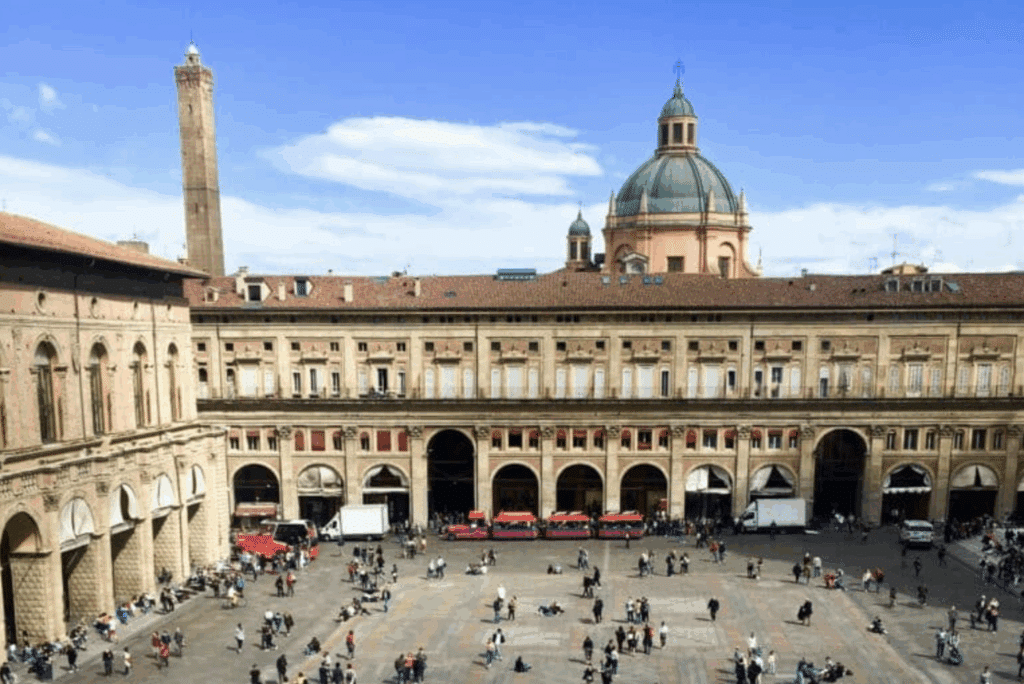
13. The University of Bologna Adds Life and History
I love telling people this fact: Bologna hosts the oldest university in the Western world, founded in 1088.
This isn’t just trivia. The university’s presence transforms the entire city.
Walking down Via Zamboni, I was surrounded by students debating in cafés and professors discussing philosophy over espresso.
Unlike American campus universities hidden behind gates, Bologna’s academic buildings are woven right into the city fabric.
My favorite spot is Archiginnasio’s wooden Anatomical Theater. Standing where centuries of medical students watched dissections gave me chills.
The university breathes intellectual life into everything—from thoughtful graffiti mixing politics with poetry to amazing bookshops and film festivals you won’t find in tourist cities.
This academic energy gives Bologna a depth I haven’t found in places that only offer pretty buildings and good food.
14. The Architecture Spans Centuries (Without Feeling Disjointed)
I’ve visited cities where the medieval quarter feels completely disconnected from the Renaissance district. Bologna isn’t like that at all.
The city’s warm red buildings (earning it the nickname “La Rossa”) create a visual harmony that ties everything together—from 12th-century towers to art nouveau cafés.
Walking down Via Zamboni one afternoon, I passed a medieval archway, Renaissance palace, and modern university building in the span of five minutes. Somehow, it all just works.
The Two Towers—Bologna’s leaning medieval “skyscrapers”—might steal the spotlight, but I was equally charmed by the tiny workshops tucked into ancient buildings where artisans still practice traditional crafts.
Bologna feels like reading a really good novel where each chapter builds on the last, rather than a disjointed collection of short stories.
15. Piazza Maggiore Is Ideal for People-Watching
My favorite Bologna activity costs almost nothing: sitting in Piazza Maggiore with a €3 spritz watching life unfold.
This stunning square isn’t swarming with selfie sticks like Venice’s St. Mark’s or Rome’s Piazza Navona. It actually functions as the city’s living room.
One sunny afternoon, I watched an impromptu opera performance, three wedding parties taking photos, and a heated political debate among elderly men—all within an hour!
The magnificent San Petronio Basilica provides the backdrop, but it’s the human stories that kept me coming back every day of my trip.
Morning brings hurried locals with briefcases and shopping bags. Lunchtime fills the square with students and office workers. Evenings transform it into a social hub where everyone in Bologna seems to converge.
I learned more about Italian life during my piazza-sitting sessions than from any guidebook or museum visit.
16. There’s Always Something Happening
Unlike seasonal tourist towns that roll up the sidewalks in winter, Bologna pulses with activity year-round.
Beyond food festivals, Bologna hosts:
- Art City Bologna (February): Museums stay open late with special exhibits
- Cinema Ritrovato (June): Classic films screened outdoors in Piazza Maggiore
- Bologna Jazz Festival (October–November): International jazz performances throughout the city
- Regular gallery openings throughout the year
The university’s 85,000 students ensure the cultural calendar stays packed even in off-season months. This city simply doesn’t sleep.
17. It Feels Like a City People Actually Live In
Venice feels like a theme park. Florence can seem like a Renaissance museum. Bologna? It’s just a real Italian city going about its business.
I love watching kids walking to school with their grandparents, office workers grabbing morning coffees, and stores that sell practical things locals actually need—not just overpriced souvenirs.
The city follows the rhythm of Italian life: the midday riposo is when shops close is still often observed, the evening passeggiata when everyone strolls the main streets, and Sunday lunches where three generations squeeze around restaurant tables.
This everyday authenticity helps you feel less like a tourist and more like a temporary local. In a country where so many famous places have lost this quality, Bologna stubbornly holds onto its realness.
Exploration Beyond Bologna
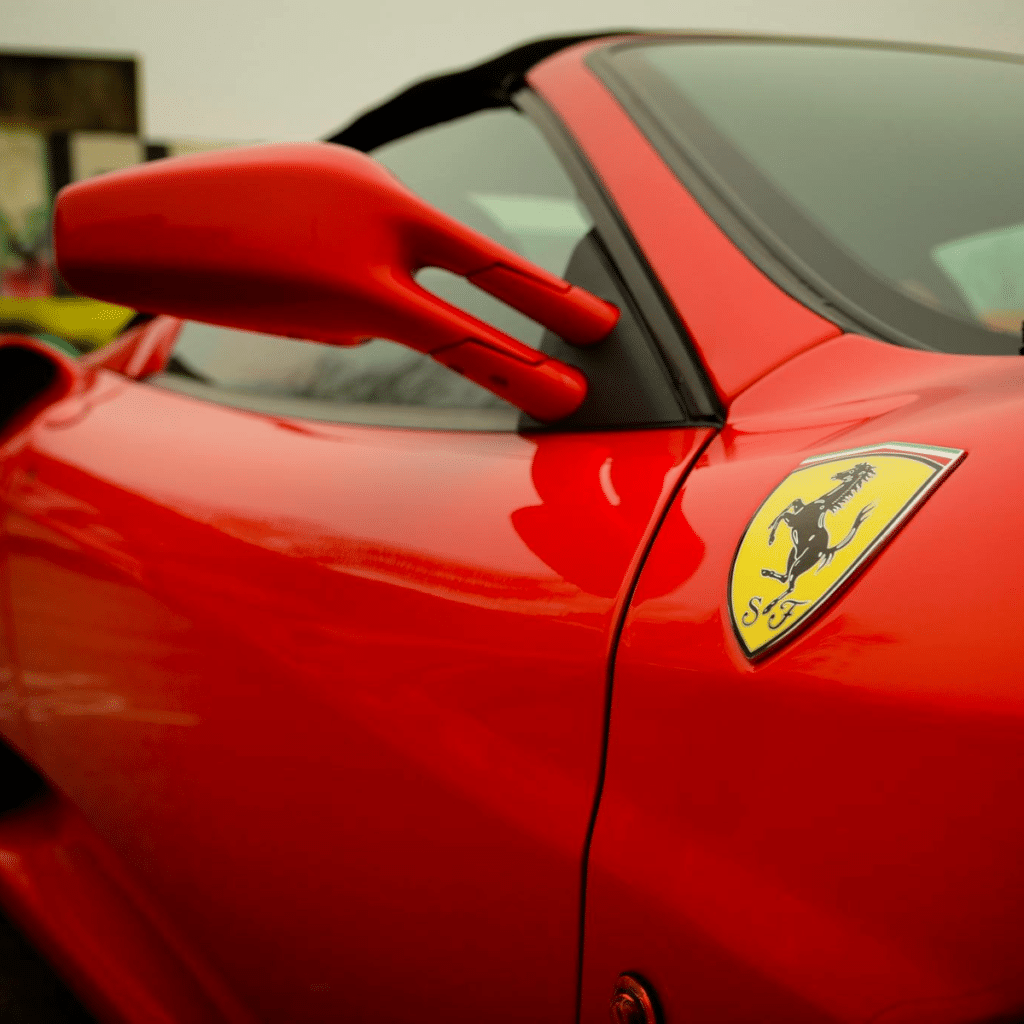
18. Easy Day Trips From Bologna
“What should we do tomorrow?” became our favorite evening question in Bologna. The options were deliciously varied.
One morning, we’d hop on a 25-minute train to Modena to sample aged balsamic vinegar and visit the UNESCO cathedral.
The next day, we’d be in Ravenna gawking at 1,500-year-old Byzantine mosaics that still shimmer like they were made yesterday.
From prosciutto-famous Parma to Renaissance-perfect Ferrara, I reached all of Emilia-Romagna’s treasures for about €10 per train ticket.
You can even hop an a train to Venice. A journey that takes 90 minutes.
The beauty? After each adventure, we’d return to “our” Bologna apartment, “our” neighborhood café, and “our” favorite dinner spot.
No repacking suitcases, no checking into new hotels—just easy, stress-free exploration with Bologna as our comfortable home base.
19. It’s a Gateway to Italy’s Famous Car Museums and Factories
“I’m not even a car person,” I told my husband when he suggested visiting Ferrari’s museum. Then I found myself gawking at automotive masterpieces like they were Michelangelos.
Bologna sits right in the heart of “Motor Valley” where Italy’s legendary vehicles are born. Ferrari, Lamborghini, Ducati, and Pagani are all within easy reach.
The Ducati motorcycle museum is right in Bologna. Ferrari has two museums nearby—one showcasing the cars, another telling Enzo Ferrari’s personal story.
What surprised me? These places aren’t just for gearheads. They celebrate Italian design, craftsmanship, and passion in ways that captivated even this art-lover.
My engineer friend scheduled an extra day in Bologna just to tour the Lamborghini factory, where he watched craftspeople hand-building supercars. His verdict? “Better than the Sistine Chapel.”
20. It’s Perfect for Second-Time Visitors to Italy
“I’ve already seen the Big Three,” a friend told me. “Where should I go next?” My answer was immediate: Bologna.
After you’ve battled crowds at the Colosseum and waited in line for the Uffizi, Bologna feels like discovering Italy’s secret side. It has all the beauty without the tourist overwhelm.
Even for Italy first-timers, Bologna makes an excellent base. You can day-trip to Venice or Florence, then return to Bologna’s more relaxed embrace each evening.
21. It’s Ideal for Slow Travel
This city was made for slow travel. My best Bologna day involved doing almost “nothing” by traditional tourist standards. I lingered over morning coffee, wandered aimlessly through porticoed streets, and read a book in a sunny piazza.
This city rewards the unscheduled. I’ve discovered my favorite restaurant by following a local down an unmarked alley and found a tiny artisan workshop by getting slightly lost.
Bologna gives you permission to simply be in Italy, not frantically checklist your way through it. Take that cooking class. Chat with the cheese vendor. Spend two hours over lunch.
22. Once You Visit, You’ll Want to Return
The city gets under your skin gradually. Unlike Venice’s instant drama or Rome’s obvious grandeur, Bologna reveals itself layer by layer, visit by visit.
Friends who followed my recommendation report the same experience: they went once out of curiosity and kept returning.
Bologna isn’t love at first sight. It’s the steady relationship that sneaks up on you and becomes one of the treasured.
FAQs About Bologna
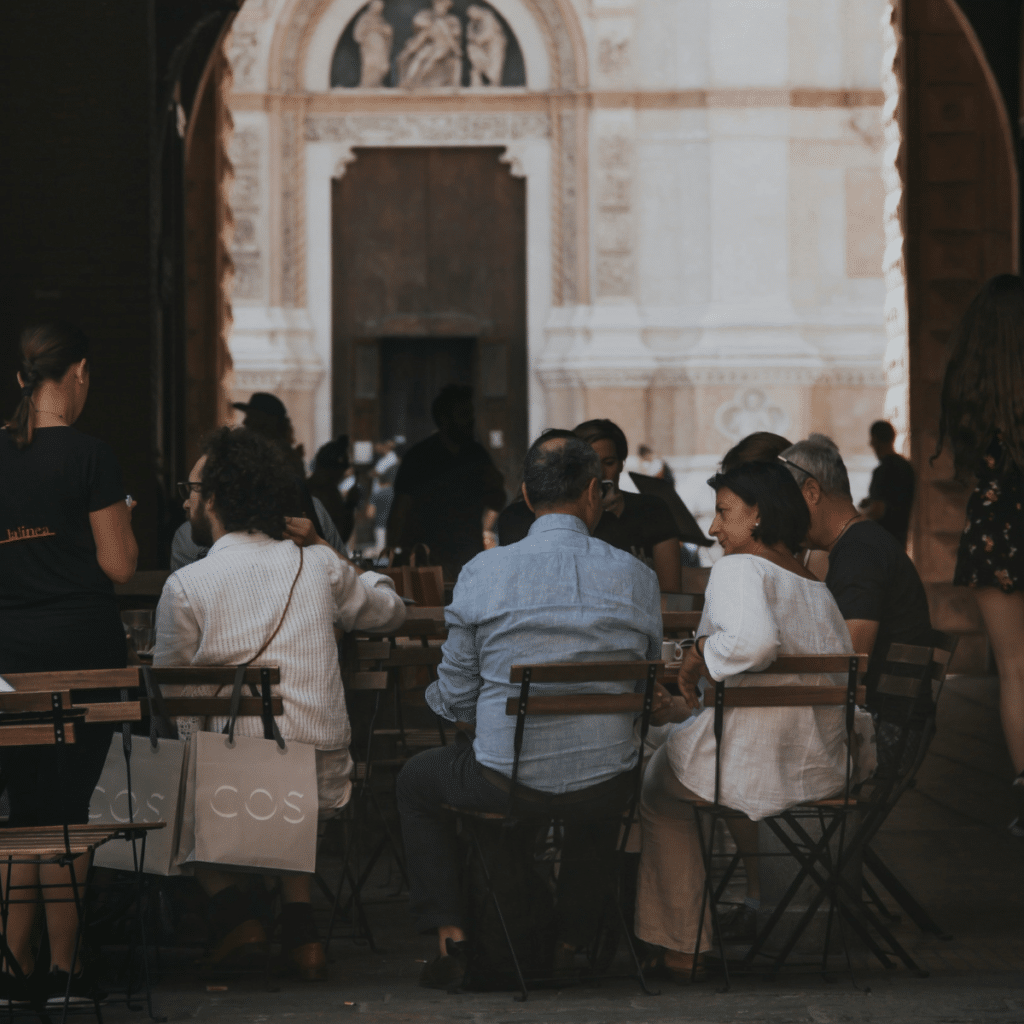
Is Bologna better than Florence for a home base?
If you want fewer tourists, better prices, and more local life—yes. Florence is beautiful but busier and more expensive. Bologna gives you easier access to northern Italy and more authentic everyday Italian experiences. Florence excels in Renaissance art and architecture, while Bologna offers incredible food and a more relaxed atmosphere.
How many days do you need in Bologna?
Plan for 3–5 nights minimum. That’s long enough to explore the city and take a couple of day trips without rushing. If you’re using Bologna as a base for exploring Emilia-Romagna more thoroughly, 6-7 nights would be ideal. Even with a week, you won’t run out of things to do between the city itself and possible day trips.
Is Bologna safe for older travelers?
Yes. It’s well-lit, flat, and easy to navigate. Use normal travel precautions and you’ll be fine. The porticoed sidewalks protect from the weather and make walking safer and more comfortable. Public transportation is reliable when you need it. Healthcare facilities are excellent if needed. The relaxed pace and lack of overwhelming crowds make it less stressful than more touristy cities.
Can you visit Bologna without speaking Italian?
Yes. English is common in hotels, restaurants, and train stations. A few basic Italian phrases help, but you’ll get by without them. Because Bologna isn’t as tourist-focused as Rome or Florence, fewer people speak fluent English, but most service providers know enough for basic interactions. Learning simple greetings and food terms will enhance your experience but isn’t strictly necessary.
What’s the best time to visit Bologna?
April–June and September–October offer great weather and fewer crowds. July and August can be hot and many locals leave for vacation. November through March can be chilly and foggy, but you’ll have museums and restaurants mostly to yourself. Bologna also hosts several excellent winter festivals that make off-season visits worthwhile.
Is Bologna worth visiting compared to Venice?
They offer completely different experiences. Venice is unique but overrun with tourists. Bologna gives you authentic Italian life with easier day trip options and better food values. Venice is about the spectacular setting and historic architecture; Bologna is about lifestyle, food culture, and everyday Italian experiences. Ideally, visit both, but if you’ve already seen Venice, Bologna offers a completely different perspective on northern Italy.
What makes Bologna different from other Italian cities?
Its food culture, university heritage, and lack of mass tourism. Bologna has the cultural richness of larger cities but maintains its working-city authenticity. The porticoes create a unique architectural environment not found elsewhere in Italy. The city’s politically progressive nature and intellectual atmosphere create an openness sometimes missing in more traditional Italian destinations. Bologna feels lived-in rather than preserved for tourists.
Is Bologna good for families with children?
Yes, particularly for families with older children. The flat terrain makes stroller navigation easy for those with very young children. The university’s scientific museums offer engaging exhibits. Parks like Giardini Margherita provide space to run around. Food options are kid-friendly—what child doesn’t like pasta? The lack of overwhelming crowds makes keeping track of children easier than in tourist-heavy cities.
How expensive is Bologna compared to other Italian cities?
Bologna offers excellent value. Accommodations run 20-30% less than equivalent options in Florence or Venice. Restaurant meals cost noticeably less while often offering better quality. Museum entry fees are modest. Transportation costs are reasonable. However, Bologna isn’t “cheap”—it’s a prosperous northern Italian city with prices to match, just without the tourist premium found elsewhere.
Do I need a car in Bologna?
No. The historic center is pedestrian-friendly and compact. Public transportation is reliable. For day trips, trains are often faster and more convenient than driving. If you plan to explore rural areas or small towns like Brishigella in Emilia-Romagna, a car becomes useful, but not for Bologna itself. Parking in the center is restricted and expensive, making cars more of a liability than an asset.
